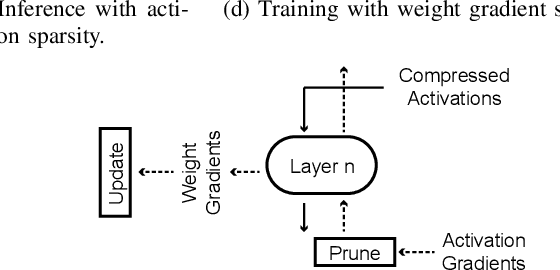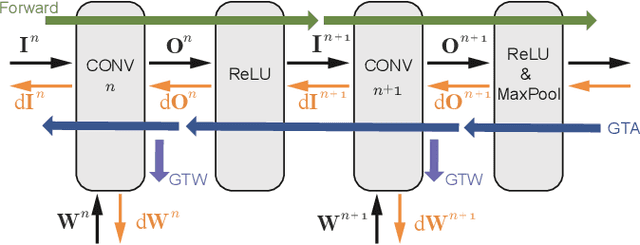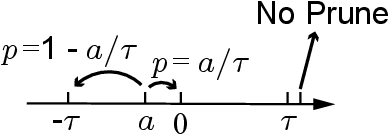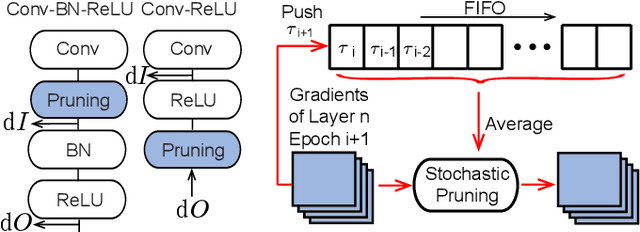Xingzhou Cheng
S2Engine: A Novel Systolic Architecture for Sparse Convolutional Neural Networks
Jun 15, 2021



Abstract:Convolutional neural networks (CNNs) have achieved great success in performing cognitive tasks. However, execution of CNNs requires a large amount of computing resources and generates heavy memory traffic, which imposes a severe challenge on computing system design. Through optimizing parallel executions and data reuse in convolution, systolic architecture demonstrates great advantages in accelerating CNN computations. However, regular internal data transmission path in traditional systolic architecture prevents the systolic architecture from completely leveraging the benefits introduced by neural network sparsity. Deployment of fine-grained sparsity on the existing systolic architectures is greatly hindered by the incurred computational overheads. In this work, we propose S2Engine $-$ a novel systolic architecture that can fully exploit the sparsity in CNNs with maximized data reuse. S2Engine transmits compressed data internally and allows each processing element to dynamically select an aligned data from the compressed dataflow in convolution. Compared to the naive systolic array, S2Engine achieves about $3.2\times$ and about $3.0\times$ improvements on speed and energy efficiency, respectively.
* 13 pages, 17 figures
SparseTrain: Exploiting Dataflow Sparsity for Efficient Convolutional Neural Networks Training
Jul 21, 2020



Abstract:Training Convolutional Neural Networks (CNNs) usually requires a large number of computational resources. In this paper, \textit{SparseTrain} is proposed to accelerate CNN training by fully exploiting the sparsity. It mainly involves three levels of innovations: activation gradients pruning algorithm, sparse training dataflow, and accelerator architecture. By applying a stochastic pruning algorithm on each layer, the sparsity of back-propagation gradients can be increased dramatically without degrading training accuracy and convergence rate. Moreover, to utilize both \textit{natural sparsity} (resulted from ReLU or Pooling layers) and \textit{artificial sparsity} (brought by pruning algorithm), a sparse-aware architecture is proposed for training acceleration. This architecture supports forward and back-propagation of CNN by adopting 1-Dimensional convolution dataflow. We have built %a simple compiler to map CNNs topology onto \textit{SparseTrain}, and a cycle-accurate architecture simulator to evaluate the performance and efficiency based on the synthesized design with $14nm$ FinFET technologies. Evaluation results on AlexNet/ResNet show that \textit{SparseTrain} could achieve about $2.7 \times$ speedup and $2.2 \times$ energy efficiency improvement on average compared with the original training process.
 Add to Chrome
Add to Chrome Add to Firefox
Add to Firefox Add to Edge
Add to Edge